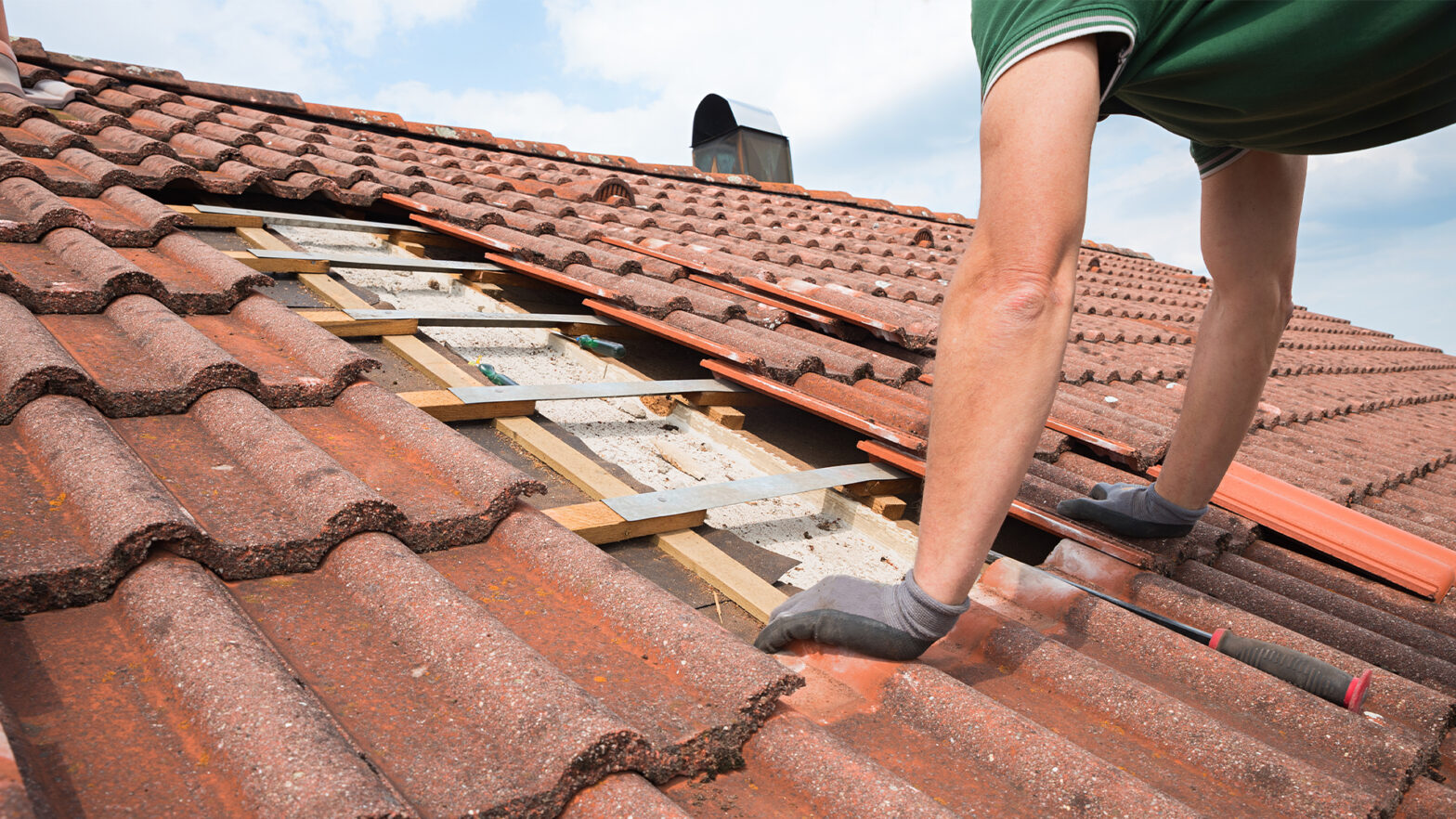What is a Soffit Vent?
It’s not a word you hear that often: soffit. However, for homeowners, this is a surprisingly important contributor to a functioning home as it relates to ventilation. In fact, it’s estimated that 70% of homes don’t have proper ventilation! How do soffit vents come into play? Let’s get into what a soffit actually is in the first place.
What is a Soffit?
A soffit is the underside of any construction element, but in a home, it typically refers to the material that covers the overhanging section of the roof eaves. The primary role of a soffit is to shield the rafters from the elements, preventing potential damage from moisture, pests, and extreme weather. It also contributes to the aesthetic appeal of the home, providing a polished finish to the roof’s edge. Materials commonly used for soffits include vinyl, aluminum, and wood, each offering different benefits in terms of durability, maintenance, and cost. While both soffits and eaves play crucial roles in roof construction, it’s the soffit vents that ensure your home breathes properly by allowing fresh air into the attic.
What Are Soffit Vents?
Soffit vents are specifically designed to facilitate the flow of air into the attic or roof space. These vents are typically installed in the soffit area, allowing fresh air to enter while warm, moist air is expelled through vents at the roof’s peak. This airflow is more vital than you might think:
- Temperature Regulation: During hot weather, soffit vents help reduce attic temperatures, which can lower cooling costs and extend the lifespan of roofing materials.
- Moisture Control: In colder months, they prevent moisture buildup that can lead to mold, mildew, and wood rot by promoting effective ventilation.
- Energy Efficiency: Proper ventilation can improve the overall energy efficiency of a home by reducing the strain on heating and cooling systems.
Different Types of Soffit Vents
There are several types of soffit vents, each suited to different needs and architectural styles.
- Continuous Soffit Vents: These vents run the entire length of the soffit, providing uniform and ample airflow across the attic space. They are ideal for larger homes where consistent ventilation is necessary to prevent hotspots and ensure even air distribution.
- Individual Soffit Vents: These are smaller, separate vents installed at regular intervals along the soffit. While they can be more flexible in terms of placement, ensuring proper spacing is critical to maintaining effective ventilation. They are often used in retrofitting projects where continuous vents cannot be easily installed.
- Hidden Soffit Vents: As the name suggests, hidden soffit vents are designed to be less visible, blending seamlessly with the soffit material. They offer a more aesthetically pleasing option without compromising on ventilation efficiency. Hidden soffit vents are particularly beneficial in preserving the architectural integrity of historic homes or buildings with specific design aesthetics.
- Circular or Rectangular Soffit Vents: Available in various shapes and sizes, these vents can be customized to fit specific architectural requirements. Circular vents are often used in smaller spaces or for spot ventilation, while rectangular vents can cover larger areas more effectively.
Placement and Quantity of Soffit Vents
As you might imagine, the placement of soffit vents is paramount to achieving efficient ventilation in your home. Ideally, soffit vents should be installed along the eaves, where the roof overhang meets the exterior wall. This positioning allows fresh, cool air to enter the attic space, which then rises and exits through higher vents like ridge or gable vents, creating a continuous flow of air. Ensuring that vents are evenly spaced along the soffit promotes uniform airflow, preventing hotspots and cold spots within the attic. Additionally, it’s important to avoid obstructions such as insulation blocking the vents. Installing proper baffles can help maintain a clear airflow path. Coordinating the placement of soffit vents with other roof vents, like ridge vents, enhances the overall ventilation system, ensuring optimal performance.
Spacing of Soffit Vents
The spacing of soffit vents plays a critical role in achieving effective ventilation. The general rule of thumb is to provide 1 square foot of ventilation for every 150 square feet of attic space. However, if you have a vapor barrier installed, this ratio can be adjusted to 1 square foot of ventilation for every 300 square feet of attic space.
For individual soffit vents, following these spacing guidelines will set you in the right direction:
- Every 4 to 6 Feet: Place vents approximately every 4 to 6 feet along the soffit. This spacing ensures that air can enter uniformly along the roofline, contributing to balanced ventilation.
- Alternating Pattern: In some cases, alternating the vents on either side of the soffit can enhance airflow and ensure comprehensive coverage.
How Many Soffit Vents Are Needed?
To determine the number of soffit vents required for your home, you need to calculate the total ventilation area needed and then divide it by the vent area provided by each soffit vent. Start by measuring the total square footage of your attic space. Based on the rule of one square foot of ventilation per 150 square feet of attic space, calculate the total ventilation area required. For example, a 1,500 square foot attic would need 10 square feet of ventilation. Typically, this ventilation area should be split equally between intake (soffit vents) and exhaust (ridge or gable vents). So, for our 1,500 square foot attic, you would need five square feet of soffit vents. Review the specifications of the soffit vents you plan to use to determine their ventilation area. For instance, if each vent provides 0.5 square feet of ventilation, you would need 10 soffit vents to meet the requirement.
Why Soffit Vents Are Necessary
Soffit vents help control moisture levels in the attic by promoting effective ventilation, which prevents moisture buildup from activities like cooking, showering, and even breathing for that matter.
During hot summer months, soffit vents allow cool air to enter the attic, reducing overall temperature and decreasing the load on air conditioning systems (the latter is extremely important to those of us in Texas!). High attic temperatures can cause roofing materials to deteriorate faster as well. It’s not unfair to say that the usage of soffit vents are not only very important but can be a long-term money saver as well.
Advantages of Soffit Vents
Soffit vents offer unique benefits that make them an attractive option for homeowners. Granted, the biggest “benefit” is how necessary they are and the job they do, but don’t forget about these either:
- Aesthetic Appeal: As hidden soffit vents are designed to blend seamlessly with the soffit material, they maintain the clean, uninterrupted lines of the roof overhang. This is especially important for homes with a specific architectural style or for those who prioritize curb appeal.
- Effective Ventilation: Despite their discreet appearance, hidden soffit vents provide effective airflow. They are engineered to maximize ventilation while minimizing visual impact, ensuring that your home stays well-ventilated without compromising on aesthetics.
- Durability and Maintenance: Hidden soffit vents are often made from durable materials that resist weathering and pests. This reduces the need for frequent maintenance and ensures long-lasting performance.
Wrapping Up
Soffit vents are more than just a construction detail; in many ways, they are the guardians of our home’s health. They prevent the silent creep of mold and the insidious spread of rot, protect our investments, and ensure that the air we breathe is fresh and clean. Their strategic placement, whether it be the sleek and subtle hidden vents or the robust and efficient continuous vents, can dramatically enhance the longevity and safety of a home.


































